Educational resources for the International Year of Biodiversity Inspire article
The United Nations has declared 2010 the International Year of Biodiversity (IYB). Ivo Grigorov, Lise Cronne and Giulia Realdon provide a collection of web resources for teachers and students on the occasion.
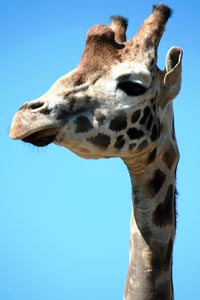
Morellón
The aim of the IYB is to raise awareness of the accelerated rate of species extinction, caused primarily by human impact on our environment. The resources below offer teachers and students participation in long-term projects, background reading, a wealth of suggested teaching activities, multimedia galleries and much more, aiming to put biodiversity in the context of earth sciences as well as climate change and human impact.
The list is far from exhaustive, so if you have come across other structured and engaging resources that have captured your students’ attention and that help put biodiversity into context, please add your comments on our websitew1.
Unless stated otherwise, all resources are in English.
The official IYB website
The official website of the IYB, run by the United Nations Environment Programme, provides a variety of multimedia resources and external links covering biodiversity basics, news and initiatives: www.unep.org/iyb
Teacher resources
Teaching Issues and Experiments in Ecology
In this open-access, peer-reviewed journal, university professors provide and report on the efficacy of a variety of ecological educational activities for undergraduates. Some of the information may be useful for secondary-school teachers, too. The ‘Teaching resources’ section offers general information on teaching ecology and getting the most out of the journal: http://tiee.ecoed.net/teach/teach.html
Nature collection of biodiversity articles
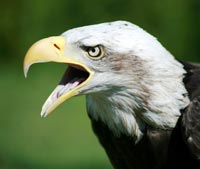
Morellón
In honour of the IYB, the research journal Nature offers a collection of previously published articles addressing the ecological and economic importance of biodiversity. The articles, some of which are freely available, vary in their technicality; teachers or particularly interested students wishing to deepen their understanding of the subject would benefit most from the materials: www.nature.com/nature/supplements/collections/biodiversity
Science literacy guides
Funded by the US National Science Foundation, the National Marine Educators Association and the National Oceanic and Atmospheric Administration, these literacy guides are developed by scientists for non-experts and educators (primary and secondary school). The guides are constructed around the current science syllabus and extensively address the relationships between biodiversity, the geosphere, the hydrosphere, climate change and human impact.
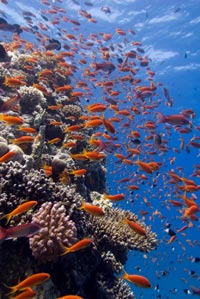
iStockphoto
Earth science literacy: www.earthscienceliteracy.org
Climate literacy: www.climateliteracynow.org
Ocean literacy: http://oceanliteracy.wp.coexploration.org
Classroom resources
ARKive
ARKive gathers films and photographs of organisms from around the world, focusing on endangered species and ecosystems. The ‘Learning resources’ section provides teachers with ready-made PowerPoint® presentations, handouts and links to relevant ARKive images for the primary- and secondary-school classroom activities built around Darwin’s voyage on HMS Beagle and his theory of evolution: www.arkive.org/education/resources
Breathing Places
Aimed at schools and communities supporting younger students, the BBC’s Breathing Places project encourages biodiversity awareness and education by suggesting a variety of low-cost outdoor activities to help wildlife. Multimedia guides can be downloaded for free, and a small selection of specific classroom resources are offered. The website is available in English and Welsh: www.bbc.co.uk/breathingplaces/schools
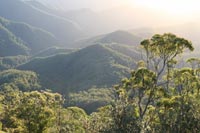
iStockphoto
KeyToNature
KeyToNature supports biodiversity education by providing European schools and universities with interactive software and online tools for identification of organisms. Project partners from 11 countries (Austria, Belgium, Bulgaria, Estonia, Germany, Italy, Netherlands, Romania, Slovenia, Spain, UK) offer materials in 10 languages for a variety of platforms, including Apple®, Windows® and mobile phone, but some require the user to register with the website and / or purchase online access, CD-ROMs or DVDs: www.keytonature.eu/wiki
The BEAGLE project
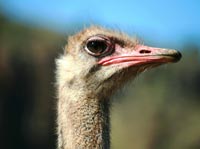
Morellón
Students in a class that has registered with the free, online EU-funded BEAGLE project choose a tree in their area and monitor it for a year, contributing to research while learning about biodiversity. Seven hundred and sixty classes from more than 370 schools in 14 European countries are registered on the website, where they enter data, submit photos and compare their results. The website is available in English, German, Hungarian, Norwegian, Polish and Slovene: www.beagleproject.org
Norwegian Environmental Education Network
This website hosts several projects (like the BEAGLE project described above) to which students can contribute local data while learning about sustainable development. More than 2500 participants from 85 countries are already registered. It is available in English and Norwegian: http://sustain.no
Young Reporters for the Environment
Young Reporters for the Environment is an international platform for secondary-school students to research and report on local environmental issues, encouraging them to connect with the public and other young environmental journalists. To celebrate the IYB, they are putting a particular emphasis on the topic: www.youngreporters.org
Resources for both teachers and students
Virtual expeditions with the Chicago Field Museum
Anyone can follow scientists from the Chicago Field Museum of Natural History, USA, on their current and past expeditions around the world through video reports, interactive online activities, photos, live webcasts and an email list to receive updates directly from the researchers. The expeditions focus on ecology, conservation and archaeology: www.fieldmuseum.org/expeditions
Tree of Life web project
This collaborative project between experts and enthusiasts seeks to create a complete database of all living organisms, with articles and activities focusing on evolution and biodiversity. Resources for teachers wishing to incorporate ToL activities in the classroom can be found in the ‘Learning’ section, and they and their students are invited to contribute: www.tolweb.org/tree
Encyclopedia of life
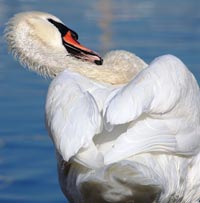
Morellón
Similar to the Tree of Life web project (with which it has a partnership), EoL aims to create a webpage for each of the 1.9 million species currently thought to exist. EoL provides resources for classroom activities and invites teachers to encourage their students to contribute to the Encyclopedia’s vast organism inventory. The website is available in English, French, German, Russian, Spanish and Ukrainian: www.eol.org. The ‘Learning and education’ pages can be found at: http://education.eol.org
The International Union for Conservation of Nature
IUCN considers conservation of biodiversity to be fundamental in addressing global issues that, ultimately, affect human wellbeing. The biodiversity section of IUCN’s website does not provide specific educational resources, but is a thorough source of information on why biodiversity matters and what kinds of projects have been undertaken to preserve it. It is available in English, French and Spanish: www.iucn.org/what/tpas/biodiversity
The Complete Work of C Darwin Online
The title is self-explanatory; this website freely provides tens of thousands of pages of searchable text and images, including Darwin’s original handwritten manuscripts, notes and data. The texts are available in 12 languages (use the search functions for manuscripts and publications to find them), and some are available in downloadable audio format (English only): http://darwin-online.org.uk/
Smithsonian National Museum of Natural History
The ‘Education’ section of this museum, based in Washington DC, USA, provides lesson plans and web-based activities on several topics related to the museum’s exhibitions, many of which do not require visits to the institution. Topics include biodiversity, anthropology and ecology, though most activities focus on North American ecosystems: www.mnh.si.edu
Marine Bio Conservation Society
The Marine Bio Conservation Society from California, USA, provides an extensive multimedia collection featuring ocean biodiversity. Forums and educational resources invite students to interact with scientists and conservation organisations, to volunteer, or even to pursue degrees and careers in marine science: http://marinebio.org
OceanLink – All about the ocean
Like the Marine Bio Conservation Site, the Canadian OceanLink website provides a wealth of information on ocean life. However, OceanLink also features a ‘For teachers’ page that links to free, comprehensive PDF guides on classroom activities exploring many aspects of marine science: www.oceanlink.info





